Whether you’re looking to block overhead noise, or minimize sounds that travel through shared walls, you’re going to want to invest in soundproofing materials.
From curtains and rugs to insulation and acoustic panels, there are various types of soundproofing materials on the market. With so many options to choose from, however, it can be hard to narrow down what types of materials you actually need to soundproof your space.
To help you on your quest to understand soundproofing materials, we’ve compiled a list of popular materials and their applications.
Before we discuss the different types of soundproofing materials, it’s important to discuss different types of noise.
There are two primary types of noise: airborne and impact (structure-borne). Knowing the difference between the two is important, as it will help you understand what type of sound you’re dealing with.
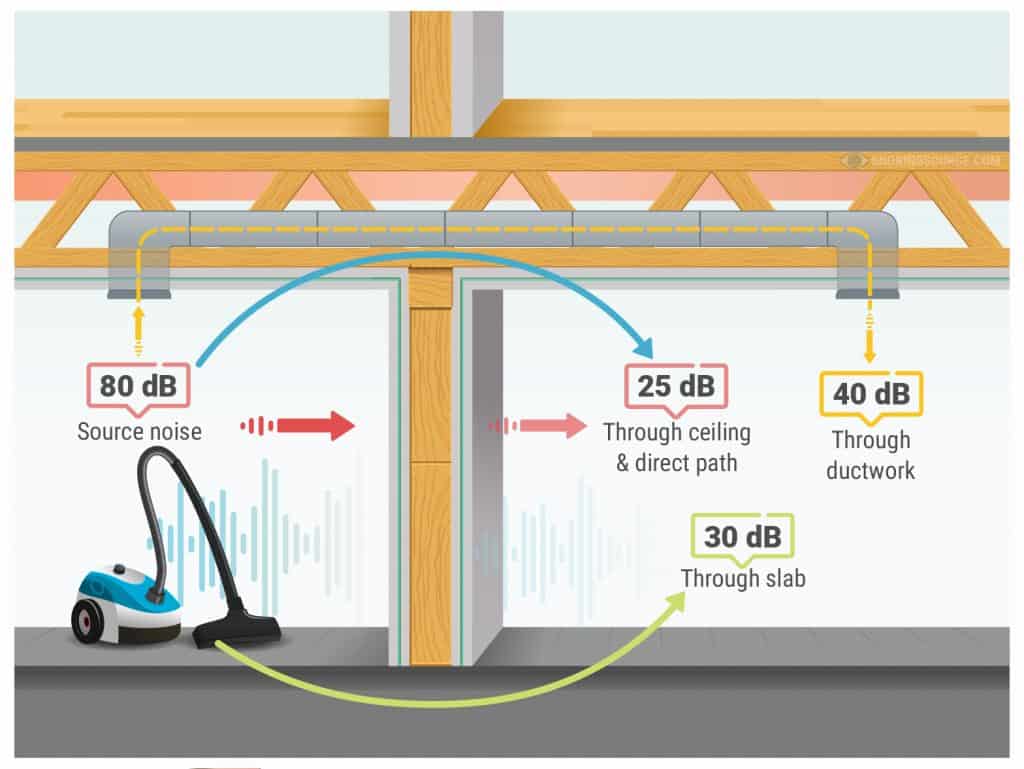
When a person or object makes a noise, it generates vibrational energy. These vibrations are then picked up by a medium like air before they collide with another solid object or structure like a wall, ceiling, window, etc. The sound then vibrates the object or structure and sound is able to be heard in the adjoining space.
Examples of airborne-noise include: People speaking, the TV, and music playing.
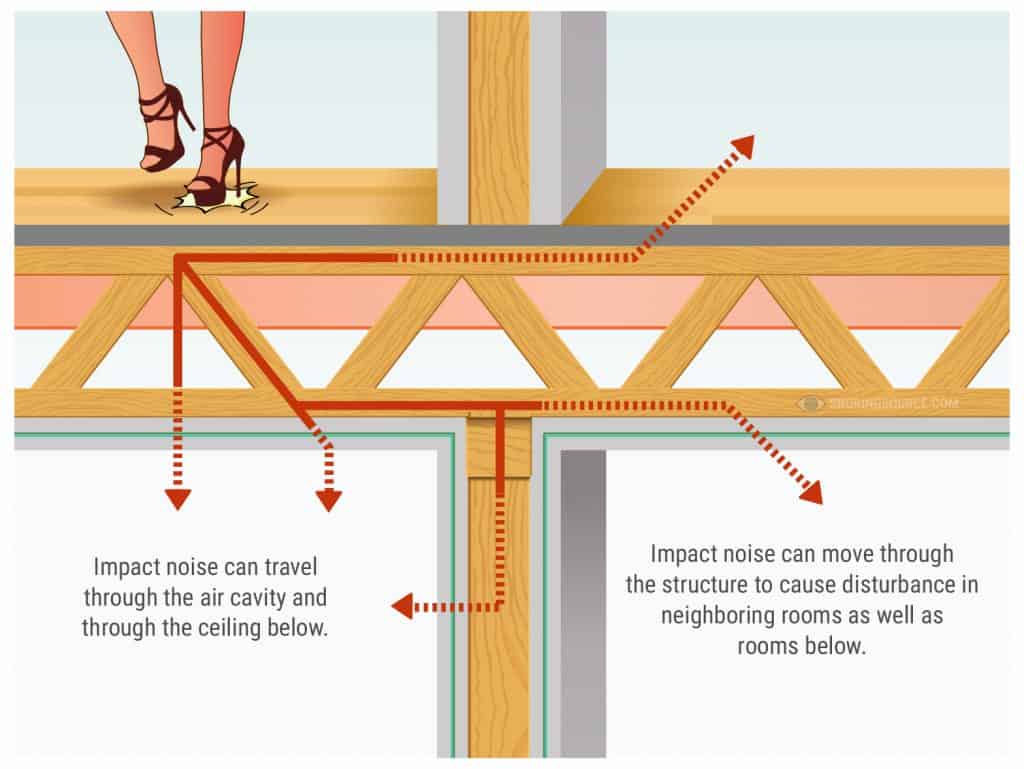
Structure-borne or impact noise occurs when an object collides with another object; footfalls on the floor above you or a ball bouncing against a wall.
When an object impacts the surface, it creates vibrational energy that travels through the structure and into the adjoining spaces.
As you can see, when it comes to soundproofing, understanding the type of noise that you’re dealing with is important, as different strategies need to be employed to block out different types of sound.
Your choice of materials will depend on your specific use case. For instance, soundproofing a room for drums will use sound absorbing techniques to acoustically enhance the room. Where-as a bedroom might seal gaps and block airways to prevent airborne noise transmission.
There are four main ways to soundproof a space: Adding mass, damping, decoupling, and absorption.
The easiest way to soundproof a space or structure is to add mass or density to it. The more dense something is, the harder it is for soundwaves to penetrate it.
By employing various widths and densities you can effectively reduce sounds in a variable frequency range. Keep in mind though that no matter how heavy something is, it still has the potential to vibrate, just not as easily.
Damping is essentially the reduction of resonance in a room through reflection and diffusion. In laymen terms , it means to dissipate sound waves and vibrations before they have chance to build up and radiate sound.
It's important to remember that soundwaves are nothing more than vibrational energy. This means that sound will conduct as long as there is a direct pathway for it to follow.
You can think of this concept like a tin-can telephone; As you speak into one end of the can, the vibrations conduct through the string and are audible on the other end. If you were to cut the string, or decouple the path, the sound can no longer be conducted.
Air cavities resonate sound. You can think of this concept like hearing the ocean in a seashell or blowing air across the top of a bottle. Soundwaves are produced as a result of trapped air resonating in the object.
This is the same concept as air resonating in a wall. As the wall is vibrated, the air in the wall also vibrates.
While sound absorption is a form of soundproofing, the materials used to absorb sound work very differently from those used to reflect sound.
Different soundproofing materials have different effects on noise. The material you use is highly dependent on the goals that you are trying to achieve.
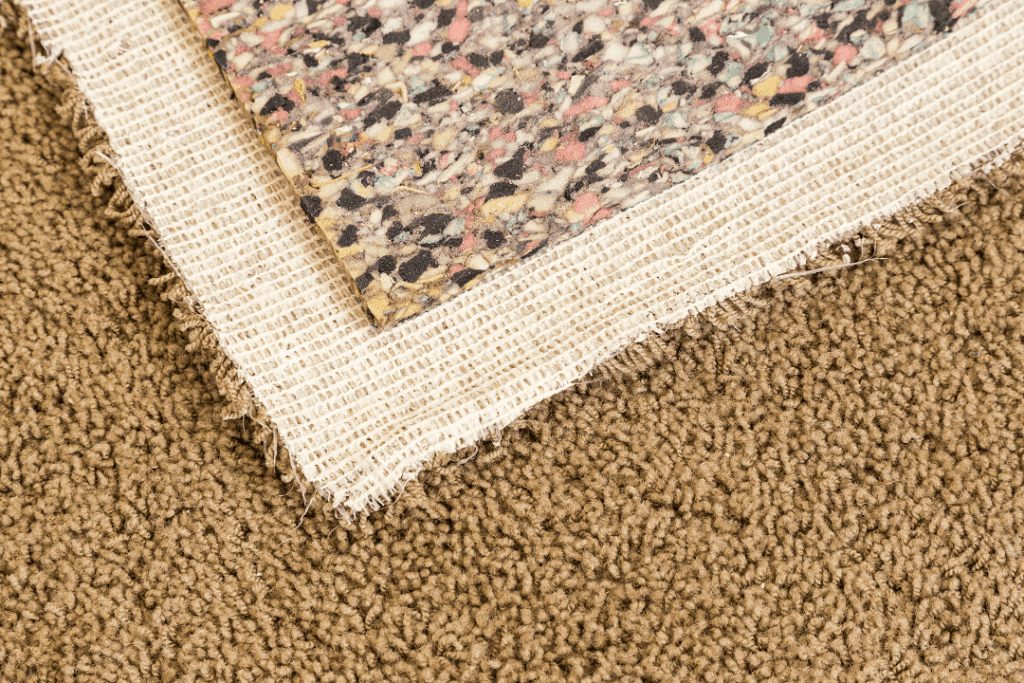
If you want to ensure that the noise from your floors doesn’t travel into the space below you – or you want to block unwanted noises from traveling through the ceiling from the floor above you – soundproof floor under-layment is a great solution.
This soundproofing medium helps to prevent the transmission of both airborne sound and impact noise, as it blocks vibrations, thereby preventing sound waves from traveling through both the air and the floor.
There are numerous types of soundproof floor underlayment materials. The majority of options feature a sound-reduction membrane that absorbs vibrations.
When selecting an underlayment, make sure you consider the type of flooring you’re planning on installing over it. Some options can only be used with specific types of flooring materials – wood, tile, stone, etc. – while others can be used with virtually any type of flooring, they may not offer the best sound absorption qualities.
The primary benefits of using soundproofing floor underlayment include:
Sound deadening and dampening materials are designed to minimize vibrations, which therefore helps to prevent the transfer of sound. These materials are ideal for use in areas that are prone to drastic temperatures or in locations that have limited or awkward space.
The construction of sound deadening and dampening materials varies. However, as mentioned, they are generally designed to reduce the transfer of vibrations. You can purchase this type of soundproofing material in sheets that can be cut-to-size, or in paint-like medium that can be applied directly onto a surface.
Good examples of damping materials include Green Glue and other acoustic sealants.
The most notable benefits of sound dampening and deadening materials include the following:
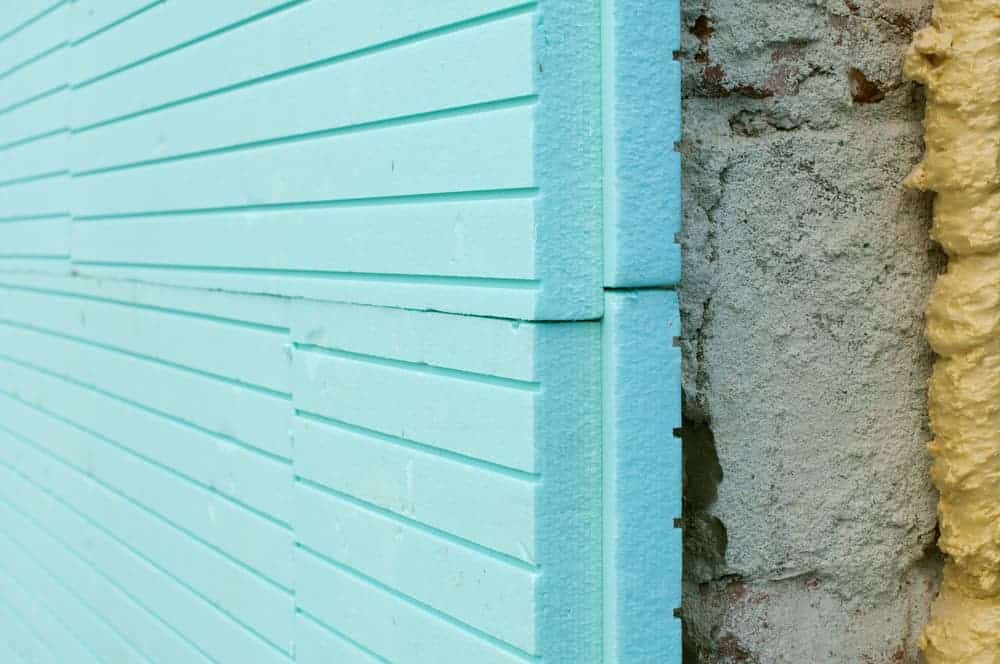
There are also soundproofing insulation products available that can be installed between walls, in ceilings, and underneath floors. This soundproofing material is comprised of thick, durable materials that are designed to absorb sound waves and prevent the transfer of vibrations.
In addition to eliminating both structural and airborne noise, soundproofing insulation also helps to prevent heat transfer, which means that the space will stay warmer or cooler (as the case may be), and can ultimately help you save money on utility bills; That’s a win-win-win situation.
There are numerous types of soundproofing insulation materials. Options include rolls of insulation, foam, and sprays. Consider the type of environment you intend to install the insulation in, your overall goal for the space, and your budget.
The advantages of using soundproofing insulation to block unwanted noises include:
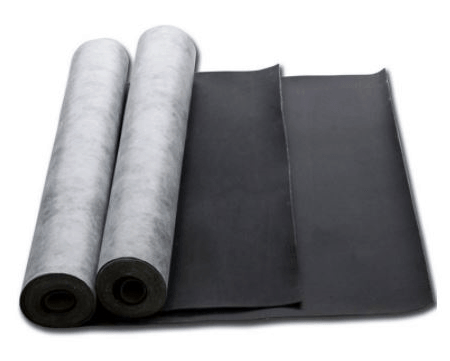
If you’re looking to prevent unwanted noises from traveling into your property – airplanes, trains, traffic, etc. – soundproofing barriers are great option to consider.
These materials are designed to block out the transfer of both structural and airborne noise, as they minimize vibrations and reduce echoes, thus preventing the transfer of obtrusive sounds from traveling into your space.
Soundproofing barriers are constructed out of a variety of materials; Options include fiberglass composite, foam composite, and mass load vinyl. They can also be permanent or temporary. Examples of some of the locations where this type of soundproofing material may be used includes:
The main benefits of using soundproofing barriers to minimize the transfer of unwanted noises include:
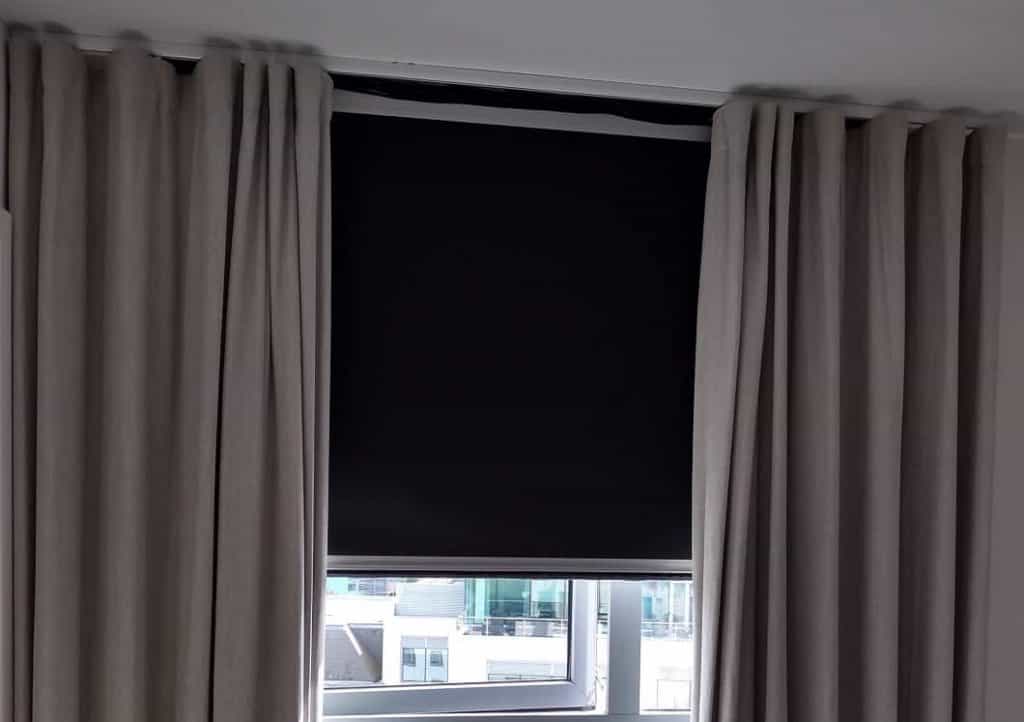
Windows are often a source for unwanted noise transfer. Typically, airborne sound is the most common type of noise that travels through windows; However, impact noise can also travel through them. Examples of sound that can travel through windows include voices, traffic, construction, and wind.
If you’re looking for a way to reduce the amount of sound that travels through the windows in your home or business, you could replace them with "soundproofing windows" or double/triple-pane windows. The issue with retrofitting "soundproof" windows is that it's expensive.
However Soundproofing curtains or drapes are a more affordable option. While soundproof curtains can deaden vibrations, no curtains are completely soundproof. If you're on a budget but require soundproofing, building a window plug or insert is usually the next step to consider.
Soundproof curtains are made of thick fabric that’s intended to absorb soundwaves, thus preventing the passage of vibrations indoors.
The benefit of this type of soundproofing material includes:
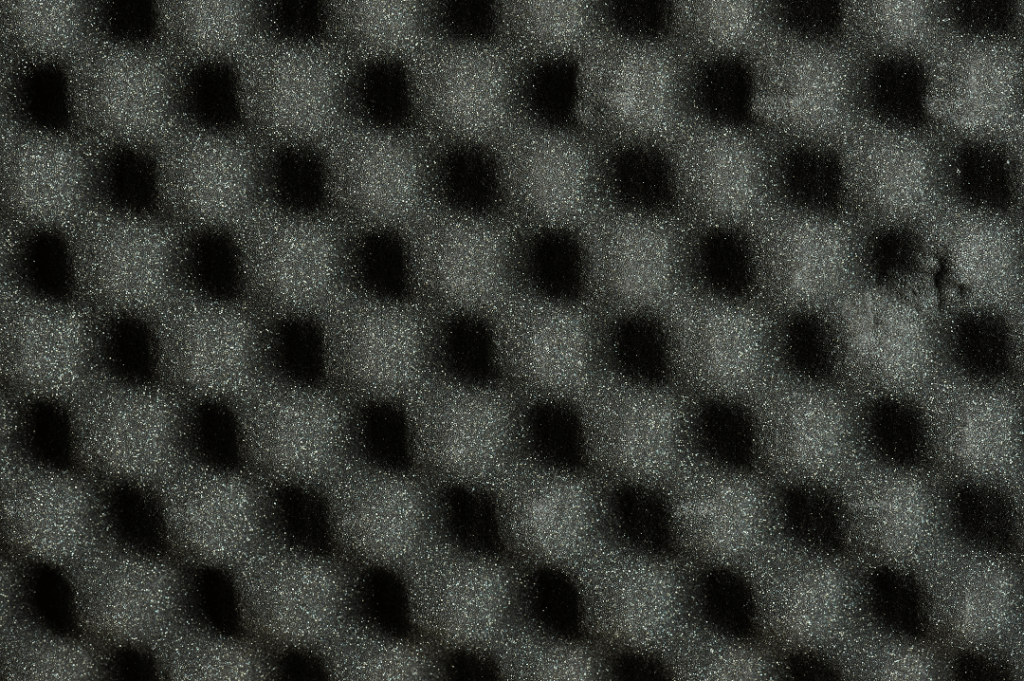
If you are looking to prevent noise from traveling out of your space and into another one, acoustic panels are a great option to consider. These panels absorb sound, thereby reducing echoes and reducing feedback.
Acoustic panels are comprised of compressed foam or wool, which allows the material to absorb sound waves and minimize reverberation in walls that are located in enclosed spaces. These panels help to “clean” unwanted noise from an area.
Foam panels are a form of porous absorber; Meaning they allow soundwaves to penetrate the surface of the material and flow into the fibrous/cellular structure. Since energy can't be created or destroyed and only transformed, the incident sound waves are converted to heat energy through frictional and viscous resistance.
The advantages of acoustic wall panels include:
As you can see, there are a variety of soundproofing materials to choose from. The type of material you should use depends on the type of sound you are trying to eliminate, as well as the space you plan be install the material in. With the right materials, you can effectively eliminate unwanted noise and create a more peaceful, noise-free space.

Snoringsource.com is a participant in the Amazon Services LLC Associates Program, an affiliate advertising program designed to provide a means for website owners to earn advertising fees by advertising and linking to amazon(.com, .co.uk, .ca etc) and any other website that may be affiliated with Amazon Service LLC Associates Program.